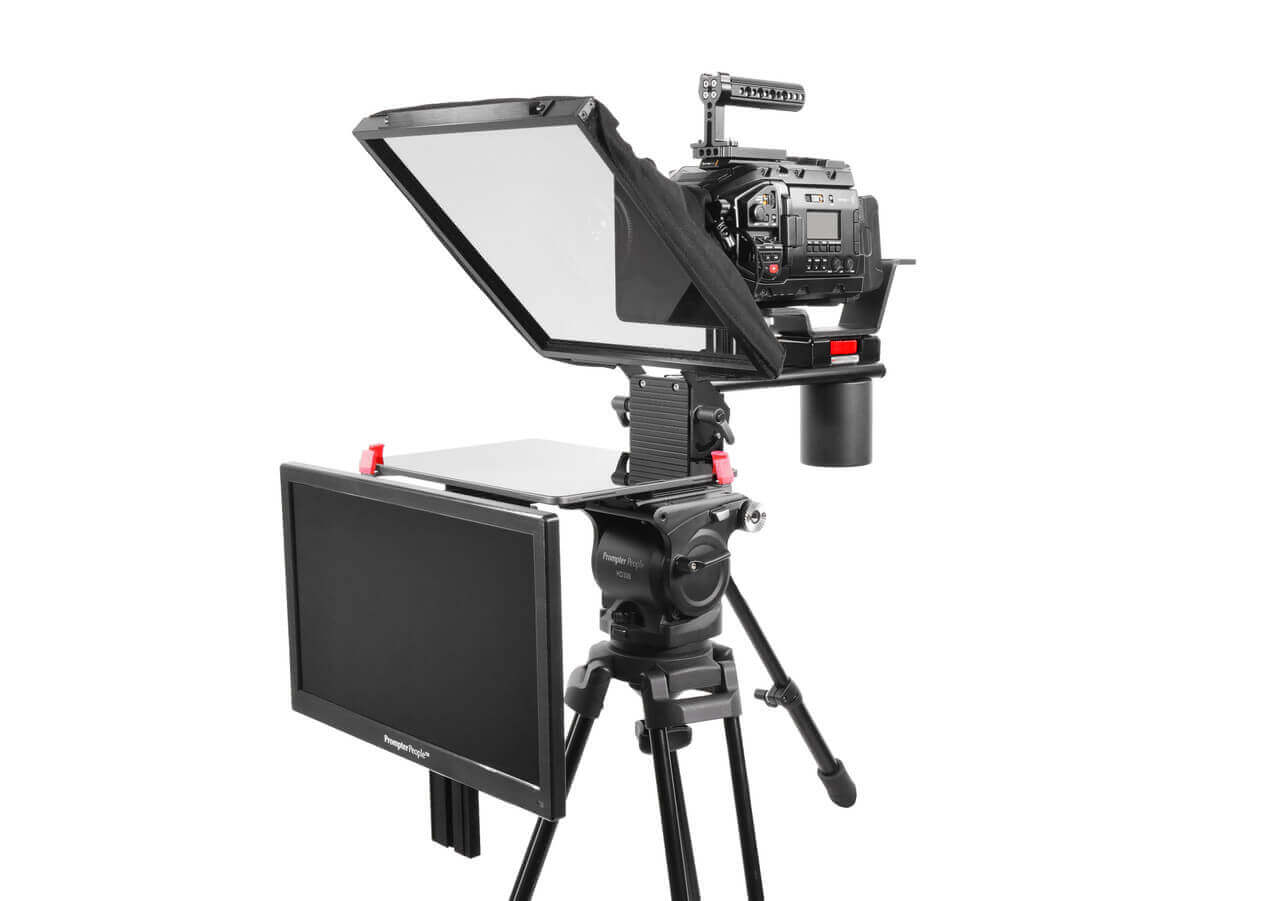If you’re a content creator looking to connect with your audience, working on eye contact is surprisingly easy and can make a big difference in how people relate to you. As humans, we’re hardwired to respond to eye contact. It shows we’re engaged, and it instantly boosts trust—even if you’re just facing a camera.
Of course, talking to a lens instead of a person can feel awkward. No one’s actually looking back at you, and you may or may not remember every word you planned to say. Fortunately, you’ve got options—plenty of ways to keep your gaze on the camera without losing your momentum.
1. Look directly into the camera
Sometimes the easiest method is the old-school one: memorize your lines or just wing it, then look right into the lens.
Pros:
- Feels the most natural (because, well, you’re literally facing the lens)
- No added expenses or fancy gear
Cons:
- Memorizing scripts can be a headache
- You’ll rack up more retakes and editing if you slip up
2. Use a teleprompter
Calm down there, Lester Holt. Purchasing a real teleprompter is an investment, and it's not always worth the cost. If you film with a smartphone or prefer improvising your lines, definitely skip this one.
 |
Teleprompters are made up of a horizontal screen displaying your script and a piece of transparent glass mounted in front of the camera lens at a 45 degree angle that reflects the script on the display so you can read it. They’re most commonly used in broadcast television news and talk show studios, though there are more lightweight versions out there designed for digital content creators.
On the fence? Read more in our article, How do teleprompters work, and do I need one?
Pros:
- Maintain eye contact without memorizing a script
- Adds a level of professionalism to your shoots
Cons:
- Additional cost that requires additional setup
- Still shows some eye movement
- Requires additional software
3. Use virtual teleprompter software
Rather than shell out a few hundred dollars for a physical teleprompter, try looking into an app that can help you achieve the same outcome. There are a variety of mobile and desktop apps that scroll through your script. You can’t get the same precision of looking into the camera as a real teleprompter, but you can get close.
Want to go this route? You’re in luck; we wrote an entire article on the Top 8 best teleprompter software picks for professional video. One of those picks? Descript, of course. While it's not technically teleprompter software, it acts just like it: All you have to do is write your script in-app and read from it while using Descript to record your video.
 |
Pros:
- Cheaper than a real teleprompter
- No bulky equipment
- No memorization necessary
Cons:
- You can’t look directly at the camera as you read
4. Fix eye contact later with AI
We saved the best for last.
Meet our modern solution for the age-old problem of eye contact. With the click of a button, Descript’s AI can make your eyeballs look directly into the camera, even if you were looking down at your script, over at your pet, or off into the endless void—all while keeping your natural blinking and expression intact.
Learn more about Descript’s AI-powered Eye Contact correction.
Pros:
- Don’t have to memorize your script
- Cuts down on retakes and saves time in the edit
- No additional software or gear required
Cons:
- Can occasionally glitch if you’re looking too far off-camera
FAQ
How do you edit eye contact in a video?
Using Descript’s Eye Contact effect is the easiest way to edit your eye contact. Just apply the effect to a single-person video with a clearly visible face, and the AI subtly adjusts your gaze toward the camera. For the best results, convert variable frame rate (VFR) files to a constant frame rate (CFR) before importing, and make sure your eyes are well lit and facing the camera during most of the recording.
How do you maintain eye contact in a video call?
Look directly into your camera instead of focusing on your own image or the screen. Place the camera at eye level, keep your notes or presentation close to the lens, and ensure good lighting. Although Descript’s Eye Contact effect is designed for pre-recorded videos, these tips help create a similar connection during real-time calls.
How do you make eye contact in a video?
You can memorize your script and look directly into the lens, use a physical or app-based teleprompter, or correct your gaze afterward in post-production. For an AI option, try Descript’s Eye Contact effect on a single-person video; just make sure your face is large in the frame and lighting is good. That way, viewers will feel like you’re speaking right to them.
Will reflections in glasses interfere with Eye Contact?
Bright reflections or glare on glasses can make it harder for AI to detect your eyes. For best results, reduce glare by adjusting your lighting or camera angle. If your eyes are partially blocked, the Eye Contact effect may skip those sections of video.
Does Descript’s Eye Contact feature work with multiple people on screen?
No. Eye Contact currently supports videos with only one person. If there’s more than one face on screen, the effect won’t apply. For group videos, you can still use other Descript editing tools, but Eye Contact will skip additional subjects.

































